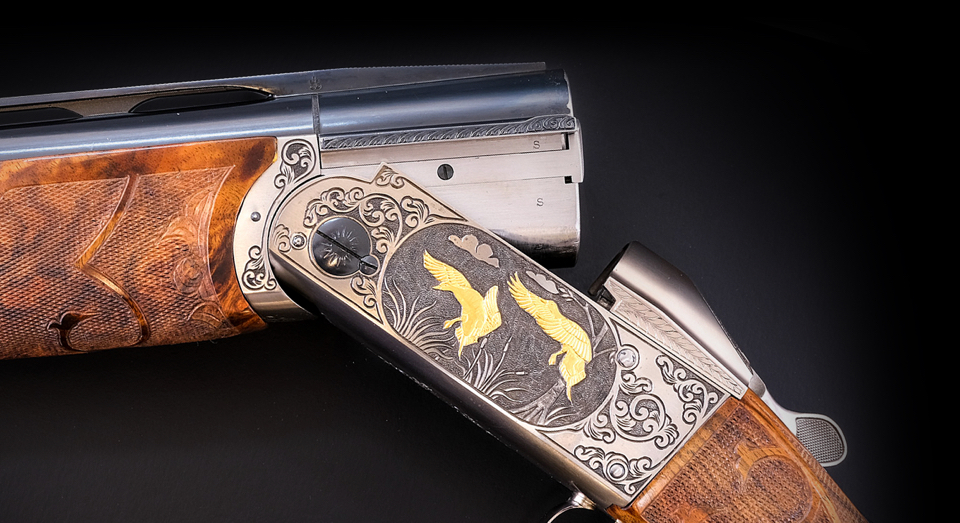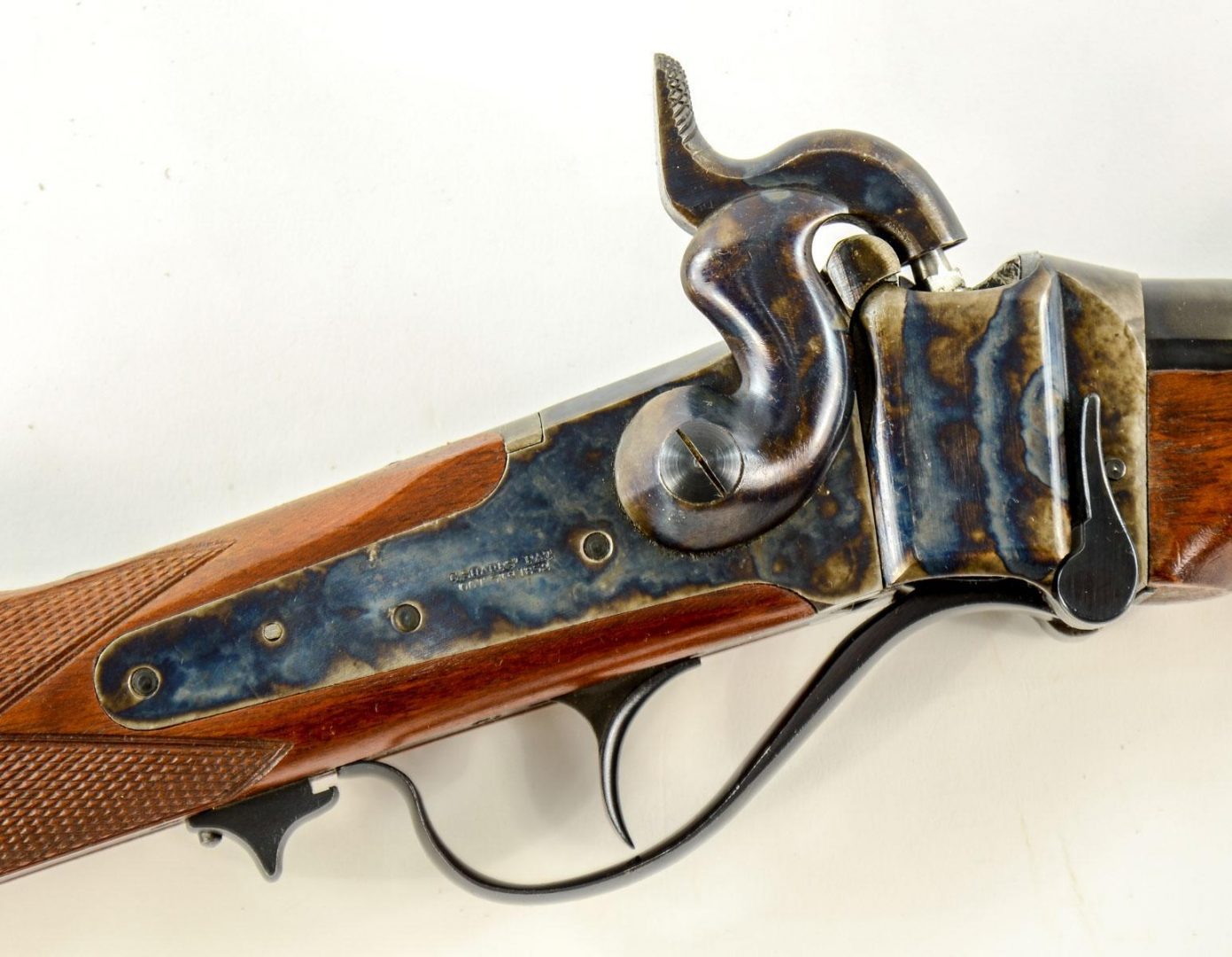Coming out of the First World War, the 1903 Springfield rifle was the most popular standard issue firearm for militaries around the world. But, in 1936, the United States Military adopted the, now infamous, M1 Garand to prepare for the dawning of a new war. And, throughout WWII, the M1 Garand would play a major part, both, in defeats and victories on the battlefield.
Learn everything you need to know about the M1 Garand rifle. Dive into the historical origins of the M1 and what differentiates the originals from replicas. And, find out what only the soldiers could tell you, about how the firearm functions in combat.
Everything You Need to Know About the M1 Garand
Officially, the U.S. Rifle Caliber .30, M1 – the M1 Garand is one of the most recognizable firearms in history, thanks to its extensive service in the US armed forces during WWII, the Korean War, and the Vietnam War. It was the first standard-issue repeating rifle in military history, and today, M1’s are widely used for sport shooting and hunting. And, the M1 Garand remains one of the most popular guns for firearms collectors, all over the world.
In 1958, the US military replaced the M1 Garand with the selective-fire M14. But, between 1936 and 1958, the United States military manufactures over 6 million M1s, and gives many hundreds of thousands to Allied forces around the world. Today, they are widely available, and you can find M1 Garands making the rounds at a gun auction near you.
Development of the U.S. Rifle Caliber .30, M1
Designed by Jean Garand, the M1 Garand was called, by General Patton, “The greatest battle implement ever devised.” Born in 1888, Jean Garand was one of 12 children and grew up in Quebec, Canada until the age of 11. In 1899, the family moved to Jewett City, Connecticut, where he and his brothers quickly found work in the textile mills.
While sweeping the floors of the Mill, Jean learned to speak English and got his first experience in machine operation. In his free time, Jean came to enjoy target shooting for sport. And, in 1909, his textile machining experience landed him job-making tools at Browne and Sharp in Providence, Rhode Island.
As Jean became more experienced with machining tools, he became more interested in designing firearms. In 1917, the United States officially entered WWI, and the Army wanted open bids on a new design for a light machine gun. Even though the Army rejected his light machine gun design, it got the attention of the right people, at the right time.
The Government made Jean a consulting engineer for the U.S. Army Ordnance Department at the Springfield Armory. The .30 cartridge generates over 50,000 pounds of pressure per square inch in the chamber – posing a formidable challenge to Garand. But, over the next 15 years, Jean Garand labored to fulfill his task of inventing a practical semi-automatic rifle, chambered in .30-’06.
WWI made the United States well-aware of the rugged, harsh conditions of modern war. Garand’s task was to create a rifle that would anticipate an inevitable escalation of arms. And his work is put to the test, as rising tensions in Europe see the birth of WWII.
The M1 Garand on the Battlefield in WWII and Beyond
As soon as US Army troops got their hands on the M1 Garand, its superiority was obvious. The rifle was deadly accurate, with surprisingly limited recoil. But, when American troops entered the field of battle, in 1942, the M1 Garand proved the most functional battlefield rifle ever designed.
It shoots in the rain, sleet, snow, sand – any everywhere else. The rifle could be relied upon in the trenches, and it was easy to clean in a foxhole. And, though it couldn’t match the firepower, it could meet the long-range of German machine guns.
In fact, the M1 Garand was so accurate that it was adopted by snipers. During America’s involvement in WWII, the M1 sees several sniper configuration adaptions, like the M1C and the M1D. And, it remains in use by snipers, throughout the Korean War and Vietnam.
Even though the rifle was for battlefield service, Jean Garand could not account for everything. During WWII, allied troops would have to adapt and overcome vulnerabilities that the rifle exploited.
In battles, U.S. infantry was being picked off by German soldiers at too high a rate. It was quickly discovered that the M1 Garand made a telltale sound when it was empty. German troops were waiting for the sound that indicated an empty clip, at which point they could zero-in.
U.S. troops became aware of their weakness – and used it as an advantage, by faking a sound that signaled German troops that they were empty. At which point, the Germans would pop-up, giving away their position to US troops.
By the end of WWII, the M1 Garand becomes the most widely issued rifle to allied troops in the world. Between 1936 and 1957, Springfield Armory, Winchester, Harrington and Richardson, Rock Island Armory, and International Harvester contributed to manufacturing M1 Garand rifles. And many of these guns are still circulating auction houses around the world, to this day.
Collectability and Where to Find an M1 Garand
The M1 Garand has a beautiful design, which is simple, reliable, and accurate. When it debuted, however, it was seen as the most sophisticated firearm ever invented for infantry warfare. The proof of the M1’s design prowess is seen in the sheer volume of original M1 Garands still functional to this day.
M1 Garands are a very popular collector piece, but that doesn’t mean they are inexpensive. An original model that is in good condition can sell for several thousands of dollars. And, there is a sub-industry of services for refurbishing, converting, and selling aftermarket accessories for the M1 Garand.
Collectors can identify the manufacturer of an M1 by looking at the stamp on its major components. The manufacturer stamps an initial that can also help identify the original manufacturing date. If you are looking for a WWII model, the originality of the gun components is of particular importance.
How to Become an M1 Garand Collector
If it has been well maintained, the M1 is a shootable antique that any collector will appreciate. It is a great gun for hunting, sport shooting, and to remember a remarkable era in history. Whether, for the history, or the hobby – the M1 Garand is a symbol of a remarkable era for the United States.
To become an M1 Garand collector, check out the upcoming firearms auction. Sign up for the newsletter to get the most recent news delivered to your inbox. And, to find out more about collecting or consigning antique firearms, contact an appraiser, today.

